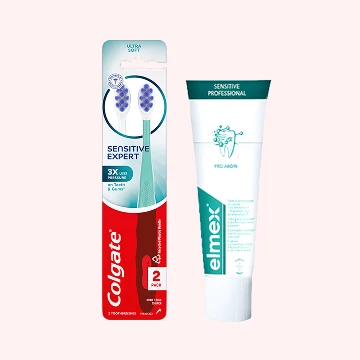Key Product Selling Points:
- Bevelled Edge: Designed specifically for efficient removal of old paint and wallpaper.
- Hardwood Handle: Provides a comfortable grip and enhances the tool’s durability.
- Full Tang Construction: Features a hardened full tang for outstanding strength and durability.
- Taper Ground Blade: Ensures lasting sharpness, making it ideal for repeated use.
- Optimal Blade Width: With a blade width of 50mm (2 inches), it covers a substantial area for efficient stripping.
Detailed Product Description:
The Stanley Tools Stripping Knife is an essential tool for anyone involved in painting or wallpaper removal. Its bevelled edge is expertly designed to efficiently strip away old paint and wallpaper, making it a valuable addition to your toolkit. The knife features a hardwood handle, which not only provides a comfortable and secure grip but also contributes to the tool’s overall durability. With a hardened full tang construction, this stripping knife offers exceptional strength, ensuring it withstands the demands of regular use. The blade is taper ground, maintaining its sharpness over time for consistent performance. Measuring 50mm (2 inches) in width, the blade is perfectly sized to cover a substantial area, making your stripping tasks quicker and more efficient.
Direction for Use:
To use the Stanley Tools Stripping Knife, hold the hardwood handle firmly and position the bevelled edge against the surface you wish to strip. Apply steady pressure as you move the knife along the surface, allowing the bevelled edge to lift and remove the paint or wallpaper. For best results, maintain a consistent angle and pace. Regularly clean the blade to prevent buildup and ensure optimal performance.
Materials:
The Stanley Tools Stripping Knife features a high-quality steel blade that is taper ground for lasting sharpness. The handle is made from durable hardwood, providing both strength and comfort during use.
Product Warnings:
Always handle the Stanley Tools Stripping Knife with care. Keep out of reach of children. Use appropriate safety gear, such as gloves, to avoid potential injuries. Ensure the work area is clear of obstacles and well-lit to prevent accidents. Regularly inspect the knife for signs of wear or damage and replace if necessary to maintain safety and effectiveness.
 Crisps, Snacks & Nuts
Crisps, Snacks & Nuts Crackers & Crisps
Crackers & Crisps Rice, Pasta & Pulses
Rice, Pasta & Pulses Cooking Ingredients
Cooking Ingredients Tins & Cans
Tins & Cans Energy, Sports & Health Drinks
Energy, Sports & Health Drinks Fizzy Drinks
Fizzy Drinks Juices
Juices Kids' & Lunchbox
Kids' & Lunchbox Tonic Water & Mixers
Tonic Water & Mixers Squash & Cordial
Squash & Cordial Water
Water Tonic Water & Mixers
Tonic Water & Mixers Tea, Coffee & Hot Drinks
Tea, Coffee & Hot Drinks Biscuits
Biscuits Table Sauces, Condiments & Dressings
Table Sauces, Condiments & Dressings Chocolate & Sweets
Chocolate & Sweets Home Baking & Sugar
Home Baking & Sugar Crackers & Crispbread
Crackers & Crispbread Jam & Spreads
Jam & Spreads Breakfast Cereals
Breakfast Cereals Dishwashing
Dishwashing Toilet Tissues
Toilet Tissues Men's Toiletries
Men's Toiletries Wine
Wine Tonic Water & Mixers
Tonic Water & Mixers Spirits
Spirits Low Alcohol & Alcohol Free
Low Alcohol & Alcohol Free Cocktails & Pre-Mixed Drinks
Cocktails & Pre-Mixed Drinks Cider
Cider Beer
Beer Tea, Coffee & Hot Drinks
Tea, Coffee & Hot Drinks Water
Water Squash & Cordial
Squash & Cordial Tonic Water & Mixers
Tonic Water & Mixers Kids' & Lunchbox
Kids' & Lunchbox Juices
Juices Fizzy Drinks
Fizzy Drinks Energy, Sports & Health Drinks
Energy, Sports & Health Drinks Tins & Cans
Tins & Cans Table Sauces, Condiments & Dressings
Table Sauces, Condiments & Dressings Rice, Pasta & Pulses
Rice, Pasta & Pulses Jam & Spreads
Jam & Spreads Home Baking & Sugar
Home Baking & Sugar Crisps, Snacks & Nuts
Crisps, Snacks & Nuts Crackers & Crispbread
Crackers & Crispbread Biscuits
Biscuits Breakfast Cereals
Breakfast Cereals Chocolate & Sweets
Chocolate & Sweets Cooking Ingredients
Cooking Ingredients Phones & Phone Accessories
Phones & Phone Accessories Tablets
Tablets Camera & Photo
Camera & Photo Audio & Hi-Fi
Audio & Hi-Fi TV & Home Cinema
TV & Home Cinema Wearables
Wearables Pantyliners &Tampons
Pantyliners &Tampons Period Products & Intimate Care
Period Products & Intimate Care Hand Wash
Hand Wash Laptops
Laptops Keyboards, Mice & Input Devices
Keyboards, Mice & Input Devices Stain Removers
Stain Removers Powder Detergent
Powder Detergent Liquid Detergent
Liquid Detergent Fabric Softener
Fabric Softener Detergent Capsules & Tablets
Detergent Capsules & Tablets Toilet Tissues
Toilet Tissues Kitchen Rolls
Kitchen Rolls Facial Tissues & Moist Wipes
Facial Tissues & Moist Wipes Toilet Cleaners
Toilet Cleaners Kitchen Cleaners
Kitchen Cleaners Bathroom Cleaners
Bathroom Cleaners Cleaning
Cleaning Washing-Up Liquid
Washing-Up Liquid Dishwashing
Dishwashing Consoles
Consoles Console Games
Console Games Controllers
Controllers Gaming Accessories
Gaming Accessories Small Kitchen Appliances
Small Kitchen Appliances Vacuum Cleaners & Floor Care
Vacuum Cleaners & Floor Care Fans, Heating & Air Treatment
Fans, Heating & Air Treatment Ironing
Ironing Sippy Cups
Sippy Cups Disposable Nappies
Disposable Nappies Health & Baby care
Health & Baby care Prepared Meals & Side Dishes
Prepared Meals & Side Dishes Formula
Formula Finger Food, Snacks & Rusks
Finger Food, Snacks & Rusks Beauty & Personal Care Tools
Beauty & Personal Care Tools Sun Care & Tanning
Sun Care & Tanning Men's Toiletries
Men's Toiletries Dental
Dental Fragrance & Perfume
Fragrance & Perfume Bath & Body
Bath & Body Shaving & Hair Removal
Shaving & Hair Removal Deodorants & Antiperspirants
Deodorants & Antiperspirants Haircare & Styling
Haircare & Styling Skincare
Skincare Manicure & Pedicure
Manicure & Pedicure Make-Up
Make-Up Premium Beauty
Premium Beauty Nutrition
Nutrition Cold & Flu
Cold & Flu Allergies
Allergies Dog Food & Accessories
Dog Food & Accessories Cat Food & Accessories
Cat Food & Accessories Closet & Laundry Storage
Closet & Laundry Storage Bathroom & Kitchen Storage
Bathroom & Kitchen Storage Home Textiles
Home Textiles Home Decor
Home Decor Games & Puzzles
Games & Puzzles Outdoor Toys
Outdoor Toys Art, Craft & Hobby
Art, Craft & Hobby Play Figures & Accessories
Play Figures & Accessories Dolls
Dolls Learning, Discovery & Science
Learning, Discovery & Science Dress Up & Imaginative Play
Dress Up & Imaginative Play Electronic Toys & Music
Electronic Toys & Music Soft Toys
Soft Toys Vehicles & Remote Control
Vehicles & Remote Control LEGO & Construction Toys
LEGO & Construction Toys Infant & Pre-school Toys
Infant & Pre-school Toys Pocket Money Toys & Collectibles
Pocket Money Toys & Collectibles Tableware
Tableware Kitchen Gadgets
Kitchen Gadgets Kitchen Consumables
Kitchen Consumables Cookware
Cookware Bags & Luggages
Bags & Luggages Jewellery
Jewellery Clothing
Clothing Nicotine Pouches
Nicotine Pouches Rolling Tobacco
Rolling Tobacco Cigarettes
Cigarettes


















































































































